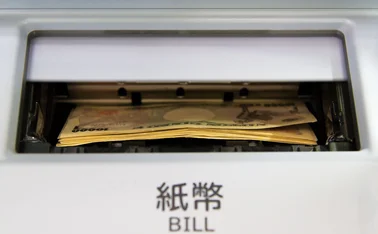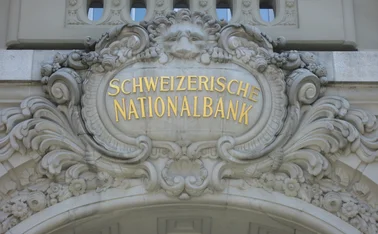
Understanding informal remittances
Better tracking of remittance flows could give central banks valuable insights to support policy

The size of remittances and their macro and microeconomic impacts and development outcomes are well documented. A case in point: official remittances to low- and middle-income countries (LMICs) in 2021 were projected to reach $587 billion, three times official development assistance and 50% higher than foreign direct investment (excluding China).
However, the volumes and size of informal (or unrecorded) remittance flows have received comparatively less attention from central banks compared with formal remittance flows and other sources of external finance, owing to their informal nature and the scarcity of data. Greater digitisation of remittances, significantly accelerated during Covid-19, has provided an opportunity to understand and formalise remittance flows. Today (June 16) is International Day of Family Remittances – a good time to reflect on the issue.
Covid-19 has reduced LMICs’ reliance on informal remittances due to lockdown measures, greater digitisation and falling commission charges, leading to a behavioural switch from informal to formal remittances. During the pandemic, this surge in formal remittances was attributed to travel restrictions and the increasing cost of sending and receiving informal remittances, which had reached prohibitive levels.
The pandemic demonstrated the critical importance of remittance flows in mitigating shocks in developing countries and emphasised the role of digital channels that seem to perform better under the new normal than agent- and cash-based models.
Need for greater formalisation
Despite the positive aspects of informal remittance transfers, the formalisation of informal remittances, especially following the availability of digital financial channels, is important for central banks to consider for several reasons.
Most importantly, the frequent use of informal channels tends to keep people outside the formal financial system, constraining their ability to save and borrow money through formal institutions, impacting financial inclusion and financial sector deepening. According to several development agencies, a condition for migrants’ remittances to be better harnessed for development is that they are routed through formal mechanisms.
The enormous size of informal remittance flows – estimated at 35–75% of recorded remittance flows – remains unaccounted for within the formal system of remittances, thus impacting their incorporation into broader policy-making, monitoring and estimation of accurate financial indicators, such as foreign exchange reserves and the sovereign’s credit rating.
Lack of information on informal remittances, for instance, limits the availability of economic data, negatively affecting monetary policy decisions and hampering the channelling of remittances to productive sectors of the economy such as investment, enterprise creation, real estate investments and micro-credits, among others.
The capture of data on informal remittances and accurate remittance data in general can positively impact the components of remittance-dependent countries’ sovereign credit ratings, such as the balance of payments (current account), economy size, economic growth and external finance flows.1
For central banks, of course, key objectives are maintaining price stability and the security of the financial system. It is important to point out, therefore, that until alternate channels are available to provide affordable access and trust in formal financial services, curtailing informal remittance systems may cause hardship to migrants and remittance recipients, especially in underserved and conflict corridors. Authorities should proceed carefully, with an awareness of the many factors driving consumer preferences for informal remittance channels, prominent among them being:2
- High remittance transfer costs. Official remittance transfers are costly for several reasons, including regulatory compliance, forex rates and financial infrastructure. Excessive compliance requirements relating to forex transfers, banking legislation, access to payment infrastructure and anti-money laundering rules raise remittance transfer costs, as do high FX conversion costs. For instance, significant differences between the official and black market exchange rates in countries of origin are instrumental in the success of informal remittance systems. Mandatory requirements for remittance service providers to access bank payment infrastructure also raise costs.
- Inadequate financial market infrastructure at the remitter or receiver’s end. Banking and financial infrastructure in LMICs are often weak and, in some cases, non-existent in rural and remote areas, resulting in considerable travel and other costs. As a result, there is an increased reliance on informal local remittance transfer systems. For instance, at the root of the strong preference for informal channels in some parts of Sub-Saharan Africa lies an inadequate formal financial system, especially when facilitating intra-regional remittance flows. Moreover, in regions that have been devastated by natural disasters or war, a non-existent financial infrastructure leaves the consumers entirely at the mercy of an informal remittance system as the only viable option. Such is the case with Afghanistan and was the case with Somalia, though the relaunch of Somalia’s interbank payment system may help.
- Migrants profile. Migrants are among the groups that have the most trouble accessing financial services due to their legal status, literacy, duration of stay, language, culture and socio-economic position. Workers who have migrated through irregular channels are unlikely to use formal modes of bank transfers because of “know your customer” requirements and fear of discovery by law enforcement. Short-stay migrant workers visit home frequently and may carry money/goods with them. Lower-wage migrants transfer smaller sums of money and prefer informal channels with lower transfer costs. Low literacy levels and language deficiencies also result in anxiety and mistrust of formal financial systems.
Recommendations
Policy-makers, including central banks, need to better understand the nature of the problem. Central banks and other institutions should assess whether informal remittances are an issue for a specific region, country, or migration corridor. This would involve estimating the size, nature, direction and usage of informal remittances. It would also lead us to the question: are there alternate effective formal channels for digital remittances or mobile money transfers?
Furthermore, there is an imperative need to understand the role of public and private sector stakeholders who can play an essential role in encouraging this switch from informal to formal channels. This will include their ability to provide a more conducive policy and regulations environment, a better-developed payment and financial infrastructure, openness to innovation and a greater understanding of the financial needs of migrants and their families.
Financial and digital literacy is another crucial ingredient. Central banks and other stakeholders can raise awareness among migrants of formal remittance channels and their benefits, including through digital and financial literacy. The creation of pre-departure links between migrants and financial institutions/banks and recruitment agencies can be a good starting point.
Digital channels can be a major enabler. As central banks are aware, the digital economy offers unique advantages to compete with informal remittance channels. Its unique attributes include convenience, lower costs, transparency, financial inclusion, security and access to a broad range of digital financial services to maximise the benefits of remittances. Digital remittance channels can therefore serve as a gateway to financial inclusion for migrants and their families. Further, digital money can cater to the needs of underserved populations such as rural households, women, migrant workers and refugees.
The case of mobile money, which is becoming a widespread channel for particularly low-value remittances, can provide central banks with an illustrative example. Mobile money-enabled remittance services were available across 184 corridors connecting migrants in 35 ‘sending’ countries to their families in 40 ‘receiving’ countries, according to a 2018 report. Studies in Sub-Saharan Africa have shown that individuals who own and use a mobile money account are less likely to send remittances through an informal channel.
Further, mobile money remittances are also the most affordable way to transfer money between countries. For instance, sending $200 using mobile money cost 3.5% in Q3 2020, 47% less than the global average. This marks significant progress in the achievement of the UN Sustainable Development Goals, since 65% of mobile money remittance corridors already meet SDG 10c: to reduce transaction costs for migrant remittances to less than 3% by 2030.
Next steps
The important takeaway here for policy-makers is the evolving role of technology and business models, often facilitated by non-banking financial institutions with a focus on underbanked and underserved segments, towards formalising remittances through affordable channels.
Understanding channels and volumes of informal remittance flows are equally essential for policy-makers. Beyond policy and regulatory efforts to formalise remittance flows, central banks should consider developing more robust models and methodologies to estimate informal remittance flows. The United Nations Capital Development Fund is working on evaluating existing methodologies and supporting capacity building efforts of central banks to better capture and estimate remittance flows. This will be the subject matter for upcoming UNCDF blogs.
Notes
- Currently, remittance data is collected as per the methodology/classification set out in the International Monetary Fund’s Balance of Payment Manual, of which the most recent version is BPM7. However, this does not include the capture of data on informal remittances.
- See, for instance, What determines the choice of transfer channel for migrant remittances? The case of Moldova, and mgrant labour remittances in Africa: reducing obstacles to developmental contributions.
Only users who have a paid subscription or are part of a corporate subscription are able to print or copy content.
To access these options, along with all other subscription benefits, please contact info@centralbanking.com or view our subscription options here: subscriptions.centralbanking.com/subscribe
You are currently unable to print this content. Please contact info@centralbanking.com to find out more.
You are currently unable to copy this content. Please contact info@centralbanking.com to find out more.
Copyright Infopro Digital Limited. All rights reserved.
As outlined in our terms and conditions, https://www.infopro-digital.com/terms-and-conditions/subscriptions/ (point 2.4), printing is limited to a single copy.
If you would like to purchase additional rights please email info@centralbanking.com test test test
Copyright Infopro Digital Limited. All rights reserved.
You may share this content using our article tools. As outlined in our terms and conditions, https://www.infopro-digital.com/terms-and-conditions/subscriptions/ (clause 2.4), an Authorised User may only make one copy of the materials for their own personal use. You must also comply with the restrictions in clause 2.5.
If you would like to purchase additional rights please email info@centralbanking.com test test test







